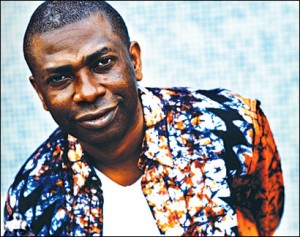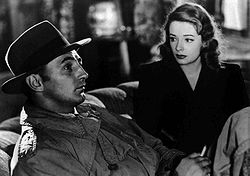Cybel The DP: 15 Unconventional Tips to Making a Low Budget Film More Extravagant
BY CYBEL MARTIN for Shadow and Act/Indiwire
“It’s always good to make up for a lack of (financial) means with an increase in imagination.”
*Originally posted – Dec. 6, 2013*
Friends who know me, know I really dislike talking about limitations. I prefer to dream big and be optimistic. I’m a “let’s put on a show! ” type optimist.
However, I will need to dip my toe into the murky pool of limitations for a second. Stay with me.
 There are a lot of indie films being made with fascinating stories. Yet too many have mediocre to painful to look at visuals and poor production value. We can adjust our approach to storytelling and raise the bar of expectations regardless of budget.
There are a lot of indie films being made with fascinating stories. Yet too many have mediocre to painful to look at visuals and poor production value. We can adjust our approach to storytelling and raise the bar of expectations regardless of budget.
I’m sure that I speak for many DPs. I’ve no delusions of shooting the next Bond film but hoped for more, given my experience, education & resources, than interviewing to shoot on a 5D in the director’s apartment. I “should” be shooting features with $3-10m budgets but US film production has lost it’s middle class. Or as DP Ryan Walters says in his post “Three Reasons Why It’s Bad Business to be a Cinematographer”, there is an “evaporation of the middle market”.
I love our Indie Film producers, even though they speak with limitations. Many are of the “we don’t have. You can’t have” variety. A film crew’s natural instinct is to problem solve & figure a way to make your film better. However, many producers hear our requests as saying they are incompetent or that crew wants to cheat them out of more money. Make too many suggestions & we can be labelled difficult and replaced. So we keep quiet. And you get what you get.
In 2012, 2% of films were shot by female DPs. When I am offered a gig, the last thing I want to do is lose it to someone who “looks more like a DP” because my inquiries and suggestions deem me “hard to work with”.
In the same way I gave advice that 1st time doc filmmakers are unlikely to hear, here are some creative suggestions I wish low budget directors would entertain and their producers be open to.
If you do nothing else, seriously consider your approach to camera movement and scene coverage.
1 Shoot High End & Rearrange the Budget. I’m prepping a low budget feature to hopefully shoot in 2014. I told my director (Don’t worry, she’s on the hunt to attach the right producer) that if we shot on 35mm or the Alexa, I guarantee we would not rent Grip/Electric equipment. The only exception would be if she wanted a dolly or car rig. I’m very comfortable with both the Alexa and Kodak stocks. I know the combination of latitude, how I can manipulate available light and decisions made with the Production Designer, will create the director’s desired look. I’d commit to not changing the total amount budgeted for cinematography, just how we allocated funds.
Shooting 35mm for a low budget feature film is nothing new. “George Washington”, “Duck Season”, “Napoleon Dynamite”, “Pariah” and “Chop Shop” were all impressively shot on 35mm for budgets under $1 million.
For inspiration on how to shoot with an Alexa and mostly available light, read about DP Yves Belanger’s work on “Dallas Buyers Club”.
2 Hire a Professional Production Designer as a Consultant. A PD’s ability to elevate a story via color, space and furnishings is it’s own form of wizardry yet frequently an afterthought in low budget films. Before putting your best friend’s unemployed roommate in charge, see if you can consult with a pro. Pay them well for three days work (instead of 2 months) to offer suggestions on the overall look of your film, advice on which resources and locations are budget friendly and to recommend crew who can do the “day to day” and operate successfully within your limitations. Ask how they’d like to be credited.
3 Color. I’ve already discussed at length the importance of color. Also see “Blue Caprice” for white wall interiors handled beautifully and “The Loneliest Planet” for subtle yet stylized use of color in nature.
4 Radical Story = Radical Visuals. Don’t play it safe visually if your film is crafting a new “reality”. Consider: “28 Days Later”, “Eraserhead”, “Pi”, “Texas Chainsaw Massacre”. A new reality means you and your creative team can experiment and redefine what NYC looks and feels like at 120 degrees (in December) or how someone’s vision changes when they’re “one of the infected”. Have fun, be bold and let your restrictions work in your favor.
5 Go International. Adding footage from a different country can have immense visual impact on your story and in explaining the inner lives of your protagonists. Hire a filmmaker friend in another country to shoot b-roll. In a similar vein, shoot visually captivating insert shots that don’t require actors nor much crew. I was extremely moved by the time lapse in “Boys Don’t Cry”.
6 One Hyper Realistic Scene. If your budget, resources and narrative dictate simple visuals, see if one scene can be stylized to play against that. I don’t want to spoil it but there is a perfect example in “Dallas Buyers Club”. Low budget horror films will do the same: save their money for one big scare or special FX. Budget for a lean crew and hire “day players” when needed.
7 Shoot B/W. It gives the lowest budgeted film a certain panache. Even subjects that you think “should be shot in color” can be more effective in black/white.
8 Sound Affects Cinematography. Poor location audio can ruin the most gorgeous of images. Innovative sound design can make them more powerful. I can’t imagine my beloved “There Will Be Blood” without “the work of Christopher Scarabosio and Matthew Wood. Instead of spending money on music rights, collaborate with your Sound Dept. Tap into their creativity the same way you would with your DP.
Access is key. What do you have free access to that you take for granted?
9 Access to a Vehicle (motorcycle, car, bus, boat, hoveround). I recently saw “Bellflower” ($17k budget). It benefits from a unique twisted premise, an extremely crafty DP and a road trip. It’s amazing how a change in terrain makes me feel like they’ve spent a lot of money. Think “Easy Rider”, “Y Tu Mama Tambien”, “Thelma and Louise”, “Little Miss Sunshine”.
10 Access to a Visually Unique Location. Before you set a scene in your dorm room or parents’ suburban home, ask yourself where else do you have access? Production value increases even more if you can show the “behind the scenes” of a location. Access to your aunt’s jewelry shop? Also film in the back where she does repairs.
11 Access to a Major Public Event. Protests, holiday fireworks, parades, carnivals etc. This is my favorite. Examples are “Get On the Bus”, “Medium Cool”, “La Haine”, “Blow Out”, “The Official Story”. Take advantage of someone else’s big budget or event planning. The b/w photo above (Actress Susan Heyward with my 2nd unit camera op) was taken while filming a narrative during the 2009 Inauguration in DC.
12 Access to a Niche Culture. A glimpse into another community offers immeasurable production value. It can provide not often seen locations, costumes or people. Your Capoeira club. Your Dad’s union meetings. When you have access, creatively exploit it: b-roll, using real people as extras, consider how it reflects on your protag and their journey (see the Housing Rights Committee scene in “Medicine for Melancholy”).
13 Access to Under-represented Weather. Does every exterior scene take place on a partly sunny day? That may be easiest to film but snow, during or after the rain (see “wet down“) or fog could be more dramatic. The short film, “A Story of Water”, co-directed by Truffaut & Godard wonderfully takes advantage of the flooding of Villeneuve Saint George.
14 Access to Other Arts/Artists. Are you also a visual artists? Use photography (opening scene of “My Brother the Devil” and of course “La Jetee”) or animation. Almodovar is brilliant at incorporating known performers into his films. Buika, in the “The Skin I Live In”, was more than a beautiful singer, she epitomized “enchantment”. The same could be said of his use of Caetano Veloso and Piña in “Talk to Her”. Cooking is also an art. Think of all the films with beautiful cooking sequences.
15 Access to Your Old Films. You can use footage from your previous shorts, docs, or film tests for atmosphere, for flashbacks (see “The Limey”), for dream sequences etc. Unfortunately we all have films we are extremely proud of but couldn’t finish. Can you recycle that footage?
Finishing a film of any genre, length or budget is a huge accomplishment. More people talk about it, critique it than can actually pull it off. I hope I acknowledged our limitations but left you armed with new creative tools to make a good film great.
***











